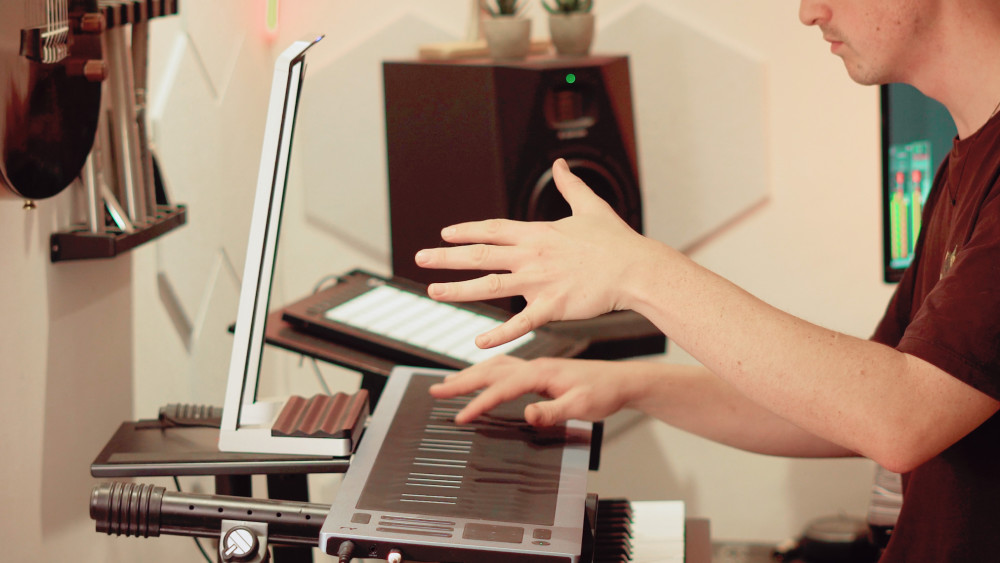Introducing the Five Dimensions of Air
See each of Airwave’s intuitive gestures in action and learn how to apply them to your own sounds.
Introducing the Five Dimensions of Air
With Seaboard, we introduced the world to Five Dimensions of Touch, each based on natural gestures, that allowed players to sculpt their sounds as they play. Now, with Airwave, we’re applying the same concept to the air above the instrument too. Connect to Seaboard, Piano M or any MIDI keyboard of your choice to expand the expressive potential of your setup with five new Dimensions of Air.
Airwave uses infrared cameras and ROLI Vision technology to reliably track all 27 joints in each of your hands at 90 frames per second. The data is converted into MIDI in real time, giving you incredibly precise control of your musical expression. Here’s a rundown of the the five current Dimensions of Air — and there are more to come!
Air Raise
Air Raise is the primary Dimension of Air. It’s a movement that typically sets things happening (increases intensity, adds layers etc.) before other gestures modify the resulting sound. Imagine a conductor lifting both arms to coax a crescendo from a live orchestra. That’s Air Raise.

Air Tilt
Air Tilt is a lot like twisting a knob, just in the air. Rotate your hands outwards to modify the sound. It’s great for fine control of things like filter frequencies, distortion, effects sends, and so on — anything you’d use a physical knob for. This is Airwave’s secondary Dimension of Air, and it’s one you’ll use a lot in conjunction with Air Raise.
Air Glide
Air Glide may look a lot like Seaboard’s Glide gesture, and the motion is essentially the same, just a little higher up. It works differently though. Gliding on a Seaboard bends notes up or down. With Air Glide, the pitch stays the same; the notes you played on the instrument remain held. Instead, Air Glide modifies the quality of those notes. It’s a natural fit for stereo effects — spreading your hands out to increase the width of a sound, for example.
Air Slide
Like Air Glide, Air Slide also has an analog with Seaboard’s Five Dimensions of Touch. In both cases, a slide means a movement from the front edge of the keys towards the back, or vice versa. Air Slide gives you an additional way of modifying sounds produced through other gestures: Lift your hands slowly upwards, for example, and then thrust them forwards to add emphasis to a moment. Or see how other gestures like Air Tilt create different effects when performed towards the front or back edge of your keyboard.
Air Flex
Air Flex refers to the way your hands angle downwards from the wrist — how far downwards or upwards are they pointing? As you play a keyboard instrument, your wrists naturally flex, with your posture changing depending on the notes you play and how you want to articulate them. As the final Dimension of Air (at launch), it might be helpful to treat Air Flex the same way. Assigned to more subtle controls or effects, it’s a great way to add natural variation to your performances.
20% off Airwave bundles
Black Friday is on, and Airwave is available now as part of our exclusive hardware bundles — with savings of up to $350. Choose the ultimate expressive setup with Seaboard 2, or go portable with Seaboard M or Piano M, the choice is yours.
Join the ROLI community